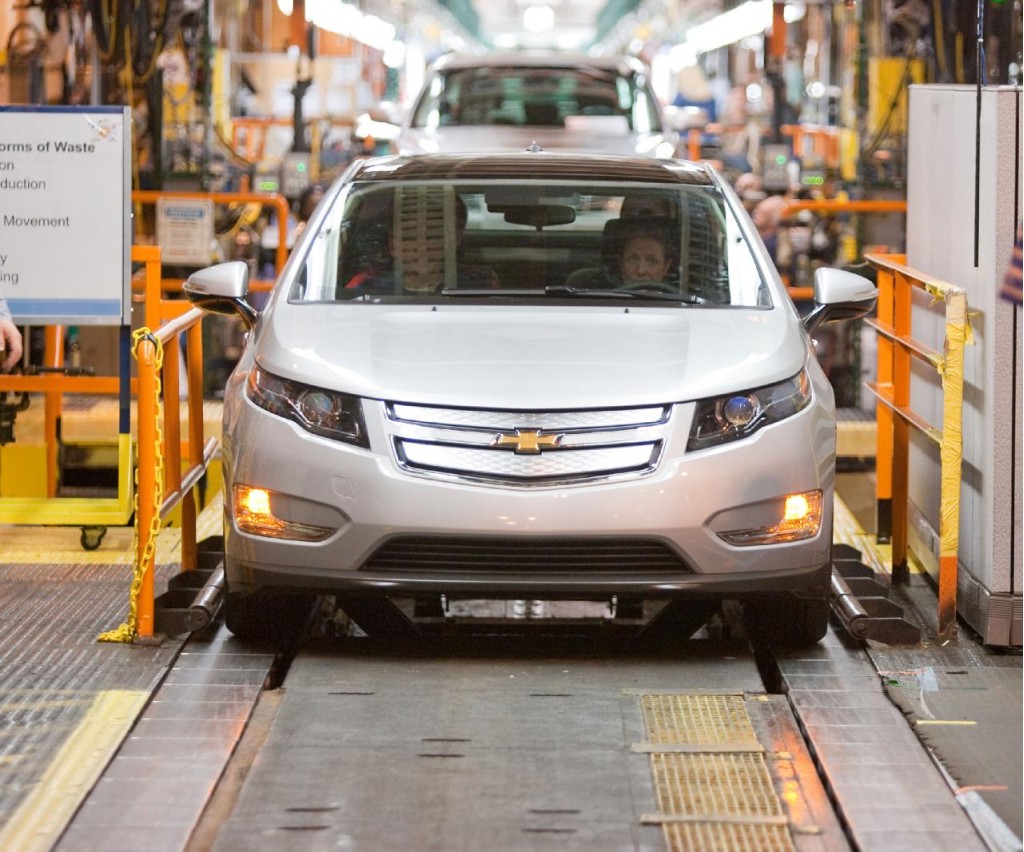We've heard this script before.
Some agency of the Federal Government proposes a new rule that will affect the design and performance of cars in some way, sometime in the future.
Instinctively, reflexively, automatically, viscerally, the industry lashes out.
Horror, catastrophe, misery, bankruptcy!
It will cost BILLIONS of dollars! Consumers will pay THOUSANDS more per car! Sales will plummet! Jobs will vanish! It will DESTROY the industry !!!
It happened with the earliest safety requirements, with every round of emissions and gas-mileage regulations, with new roof-crush standards, and so on. Remember, the auto industry even fought seat-belt rules and shoulder-harness requirements--vigorously--half a century ago.
So it's time for some perspective on the gas-mileage rules now being developed by the National Highway Traffic Safety Administration (NHTSA) and the Environmental Protection Agency (EPA) for 2017-2025 cars, under the direction of the Obama administration.
Think they'll devastate the auto industry? Bring rack and ruin upon long-suffering auto workers? Don't believe everything you read.
Beyond 34 mpg average
The current rules will require passenger vehicles to reach a fleet average of roughly 34 mpg by 2016. Today's average is about 25 mpg.

Eminem in Chrysler's Super Bowl XLV ad
And the main way it will happen is through smaller, more efficient gasoline engines. Sure, we'll see more hybrids, and plug-in cars will slowly start to enter the fleet. But wringing more miles out of each drop of hydrocarbons in your tank is largely what will get us there.
New rules now being considered could raise that average to 48 mpg, perhaps as high as 62 mpg. And, appropriately, various entities are trying to assess the costs and benefits of the proposed rules--independently of the EPA and NHTSA, which have their own numbers.
Car sales to fall by 50 percent ?!?!?
Detroit media have given quite a lot of space to dire predictions from the Center for Automotive Research (CAR), which says proposed fuel economy averages of 47 to 62 mpg will cost carmakers and consumers from $3,750 to $9,800 per vehicle.

U.S. Environmental Protection Agency adminstrator Lisa Jackson and President Barack Obama
The NHTSA and EPA, which are evaluating proposed new standards now, said meeting the rules would cost $800 to $3,500 per vehicle.
That would more than be offset by money saved on gasoline over the life of the car, depending on projections of future fuel prices.
The CAR report further predicted that annual sales would fall by 5.5 million vehicles--that's half this year's total, and one-third the normal sales level--and destroy more than a quarter-million jobs.
Study not funded by carmakers
CAR, based in Ann Arbor, Michigan, is closely associated with and partially funded by the industry. President Jay Baron told Automotive News, however, that the study was "internally funded."
The domestic auto industry is now in the middle of a wrenching transformation. Ten years ago, all the profits at GM, Ford, and Chrysler came from pickup trucks and large sport-utility vehicles, and their passenger cars were largely uncompetitive.
That's no longer the case, but those three companies still rely far more heavily than Toyota, Honda, Nissan, and Hyundai on trucks versus cars. They have the most to lose from higher mileage standards.
So perhaps it's worth asking whether there are any counterweights to CAR's gloom and doom.
Well, maybe not
Lo and behold, yesterday the Boston Consulting Group released its own projections. They are considerably less dire.

First 2011 Chevrolet Volt built on production tooling at Detroit Hamtramck plant, March 31, 2010
In fact, says BCG, improvements in gasoline engine efficiency will allow automakers to cut fuel consumption by fully 40 percent over the next decade. That's more than better aerodynamics, weight reduction, better transmissions, and more efficient accessories added together.
And it would let automakers meet the mileage standards proposed for 2020 at a cost of $2,000 per vehicle or less. That's before taking into account any impact from electric cars or plug-in hybrids, which would further reduce fuel consumption.
That $2,000 is half the cost of the same improvement in diesel engines, due to the pricey emissions aftertreatment required, 40 percent of the cost of either a hybrid-electric system or natural-gas conversion, and just one-fifth of the cost of a fully electric car.
$2,000 or less
Phil Gott, managing director of industry analyst IHS Automotive, says his projections are far closer to BCG's. "The cost impact on the average powertrain," he says, "is well within that $2,000 limit."

Ford Four-Cylinder EcoBoost Engine
He points out that today, complete powertrains including the fuel system cost the carmaker from $10 to $30 per kilowatt of output. That means a 100-horsepower engine runs from $750 to more than $2,200. The new rules may add 50 to 60 percent to that cost.
But, he notes, everyone's costs will go up, and the net effect for consumers is that cars will be somewhat pricier. Which, he says, will reverse the years-long trend of cars getting cheaper in real (inflation-adjusted) dollars even as they have gotten more powerful and added vastly more features.
"Doom and gloom?" he asked. "I don't think so."
Onus on the EPA
Analyst Dave Sullivan of AutoPacific also points out that the EPA will likely have to adjust its calculations to account for the impact of new technologies not currently factored in.

Barack Obama
"For example," he says, "the EPA doesn't take into account when a vehicle is fitted with a stop-start system, such as the Kia Rio."
He points to the 2011 Kia Rio, which includes such a system, but is rated no higher than its 2011 Hyundai Accent twin, which does not.
"We all know that with stop-start systems," he says, "city mileage should improve."
Sullivan said much of the onus falls on the EPA to "adapt, evolve, and work more closely than ever with suppliers and automakers to yield benefits for the greater good."
Where do we end up?
So what's likely to happen? Carmakers have already said they can achieve mileage increases of 3 percent per year, and they've been lobbying for that number. That would get the 2025 fleet average to a CAFE mileage of 47 mpg.
For car buyers, that will mean a combined EPA fuel economy rating of 38 mpg, due to mathematical tweaks to the CAFE results meant to reflect real-world usage.

2012 Kia Rio Sedan
Now, that's across all vehicles, from subcompact hatchbacks to four-door pickup trucks. We expect the vehicles of 15 years hence to achieve real-world fuel economy of 40 to 50 mpg, on average.
That will include a rising number of plug-in cars, some of which never use a drop of fuel. There will be a lot more hybrids, and a whole host of really small, very efficient engines that act ... well, pretty much like today's larger, lazier engines.
We have great faith in the ability of auto engineers to make the most innovative kinds of powertrains into very, very reliable mass-production technology over time.
"Just as a cell phone used to cost $3,000 and can now be had for a few bucks," AutoPacific's Sullivan says, "new automotive technology will take the same path." Over time.
In other words: Take a deep breath. We've seen this story before, and we know what happens.
The world doesn't end.
Honest.
[Detroit News, Automotive News (subscription required), Center for Automotive Research, Boston Consulting Group]
+++++++++++













